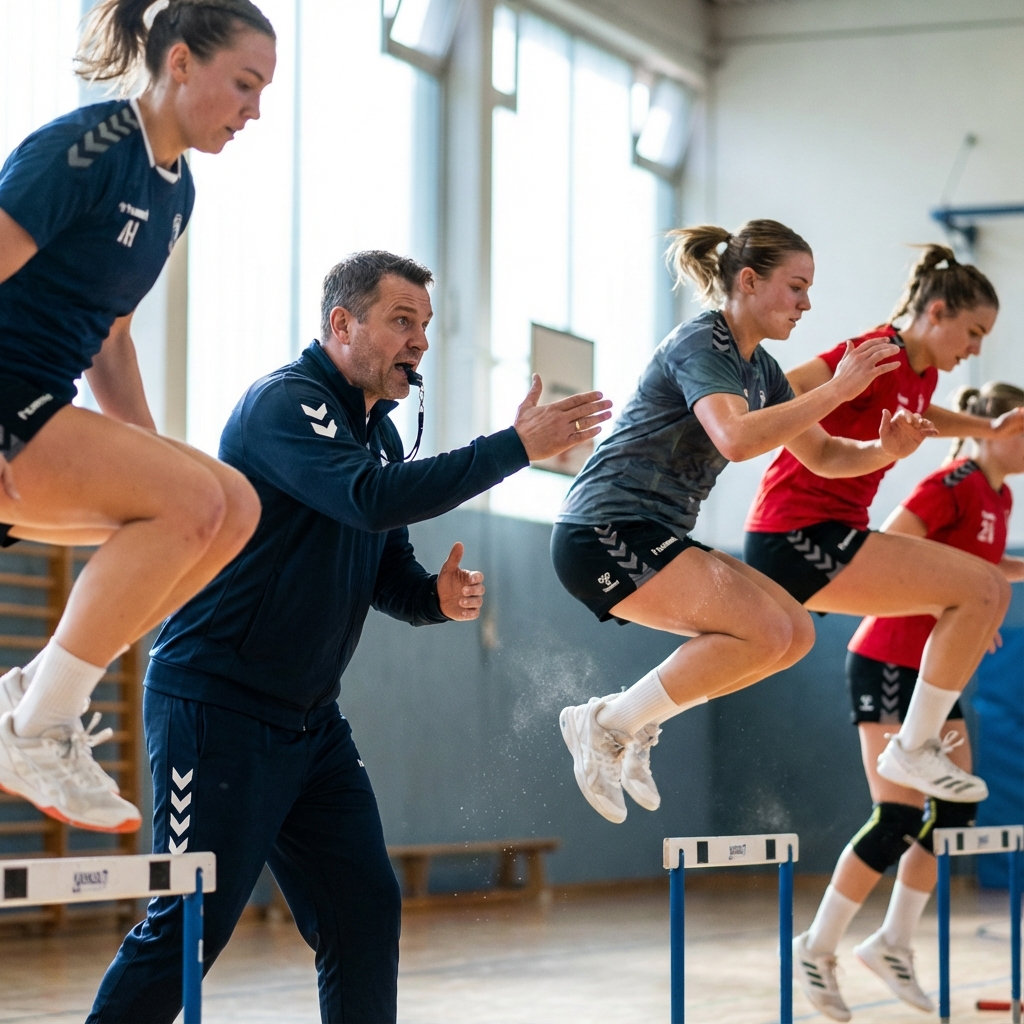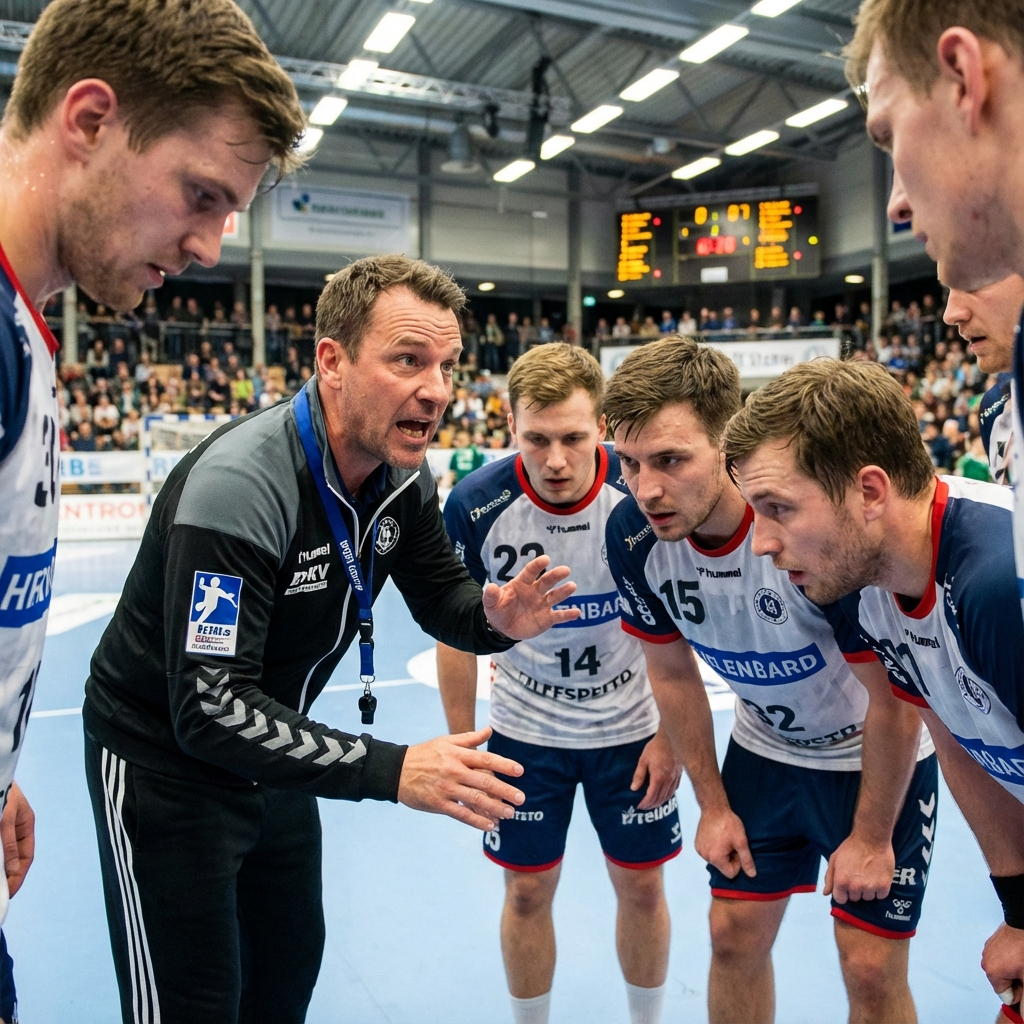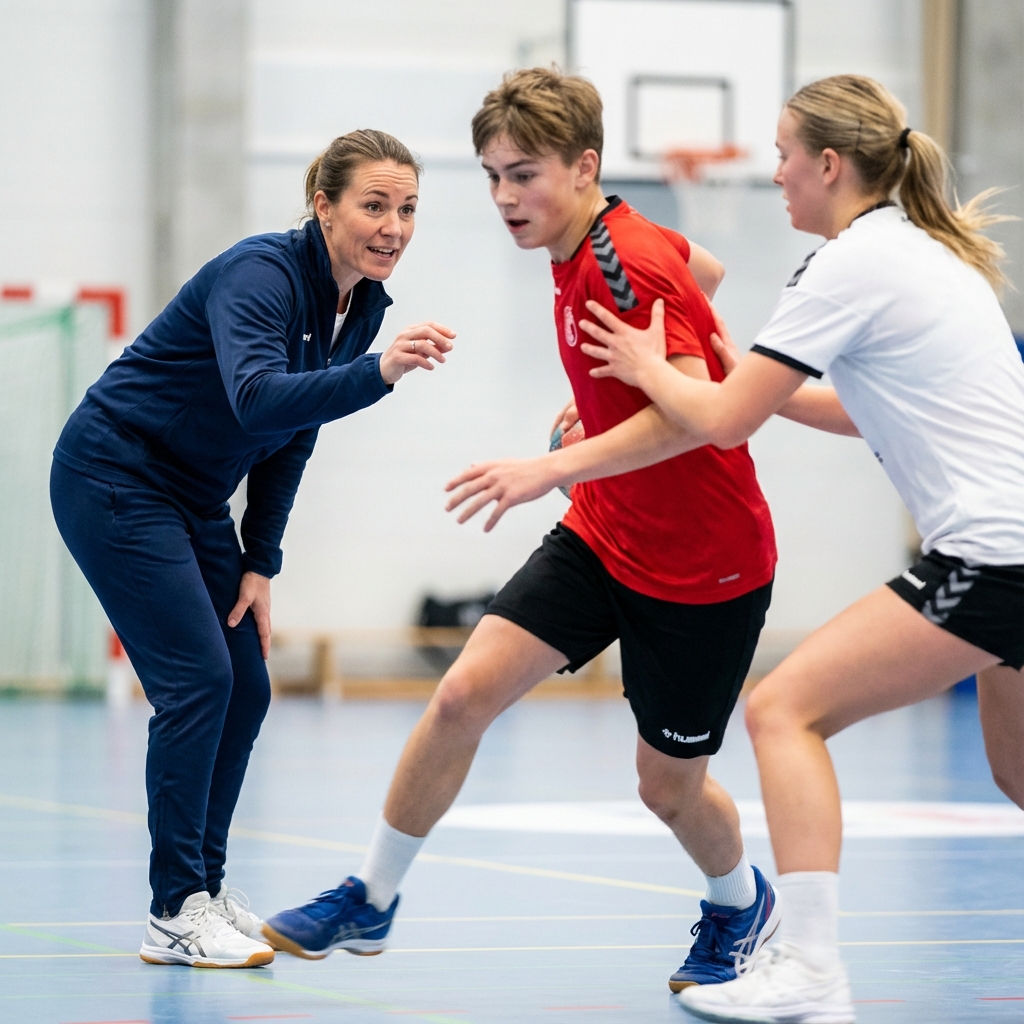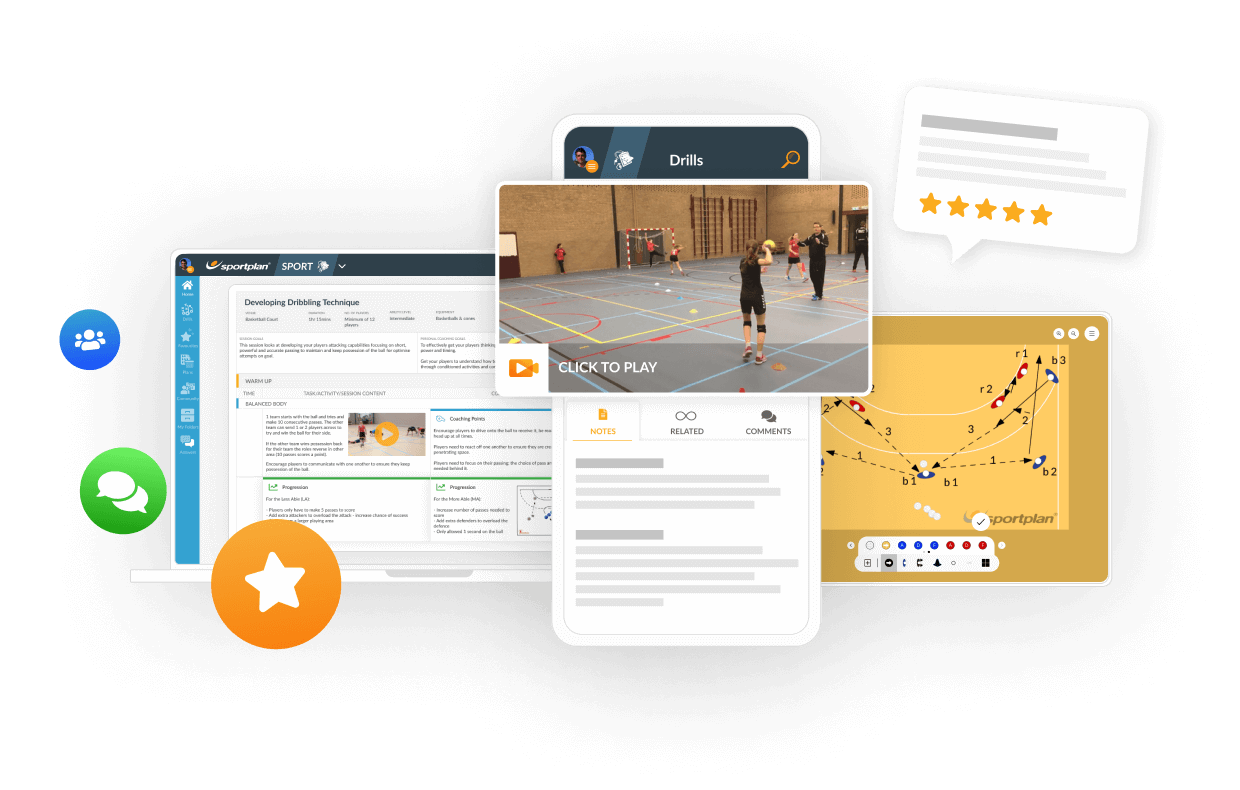Handball, The World's Most Dynamic Team Sport
Handball comes in a variety of guises from the Field (Outdoor) Handball, to the now popular Olympic (Indoor) Handball played on a 40m x 20m court to the now recently introduced Beach (Sand) Handball played on the sands of a beach
- Handball is a dynamic, popular and exciting sport that requires athleticism, strength and stamina, great fitness and most of all, Team work.
- Handball is the fastest indoor sport next after ice-hockey...
- It is a sport where players are encouraged to be athletic, be flamboyant and inventive, and above all, work together as team.
- It is one of the most popular sports in the world.
- It helps you keep you fit and healthy. Handball is a very fast, dynamic and exciting game that utilises movements of all the worlds sports.
- Handball is regularly referred to as the ultimate sport, and can be played and appreciated by any person who is willing to have fun.
- With physical contact, unlimited substitutions and shots at goal that can reach over 100 km/hour, there is always something exciting happening on the field of play.
- Handball is one of the most popular sport in Europe (after soccer) and is one of the fastest growing sports in Northern Asia and Africa. In the Americas it is becoming organised with national and continental championships and in Oceania it is on the cusp of taking off.
• Second largest sport in Europe
• Second fastest team sport
• Olympic Sport since 1936
• Played in 160 Countries Worldwide
• Over 15 million participants
• Voted Best Sport at the 2000 Olympic Games in Sydney.
Virtually anyone. You don't need to be a towering giant with arms the size of tree trunks to play (although that is certainly an advantage).
The rules are virtually the same for the men's and women's game: only the size of the ball is different. And for children, the ball is smaller again.
Handball is played on a field forty meters long by twenty meters wide with a dividing line in the middle and a goal in the center of either end. The goals are surrounded by a near-semicircular line that is generally six meters away from the goal. There is also a dashed near-semicircular line that is nine meters away from the goal.
It can also be used for simple dodging, chasing and warm-up activities
- It’s an inexpensive activity that can easily be incorporated into your program
- It promotes team work, co-operation and friendships
- It develops the basic athletic skills used in all other sport.
- It’s easily modified to fit your space, time and number of participants
- It can be played be people of all sizes, ages and genders.
- It is suitable for both beginners and experienced players. You can play in either men's, women's or mixed divisions.
- It is easy to learn and a great way to get in shape
Object of the Game
The essence of the game is to catch, throw, run and jump using tactics and strategies in a combined team effort. To win you must score more goals than your opponents by throwing the ball into the goal. The game is fast and the players need to be fit and work for the team.There are issues of tactics and strategies to resolve the problem of overcoming the opponents defence and discipline and concentration is required in defence to keep the opponents attack at bay.Start of Game:
Play begins with a throw-on at midcourt, which is repeated after each goal.The defending team must be back 3 meters for the start of play and can be anywhere after each goal, but must stay away 3 metres from the player who throws on.
Duration of Game:
The game consists of two 30 minute halves ( 2x20 min for youth players)Size of the Field:
On a 40 m x 20 m playing area, both of which have 3m by 2m goals.Number of Players:
Teams can consist of up to a maximum of 14 players, 7 on the field at any time.Method of Scoring:
The idea is to score more goals than your opposing team by throwing the ball into the goal. After a team scores, the play begins again with a throw-on at midcourt in the middle of the field by the non scoring team.
Attacking players move the ball up-court by passing or dribbling and shoot for goal from outside an arc marked on the court. No field player is allowed to reach the goal, but they are allowed to jump into the circle, if they are leaving it at once after the jump.
Players may dribble the ball as in basketball but are allowed three steps before and after the dribble. Players are not allowed to play the ball with their legs below the knee or to dive on the floor to play a ball
Defensive players are allowed to use their body,arms and hands to obstruct an opponent either with or without the ball. The game is quite fast and includes much contact as the defenders try to bodily stop the attackers from approaching the goal. Only frontal contact by the defenders is allowed; when a defender stops an attacker with their arms on the side, the play is stopped and restarted from the nine meter line, with the attacking team in possession.
Positions
- backcourt players: Usually tall, they are good leapers who shoot from the backcourt directly or try to penetrate the defense.
- Circle runners (pivot): Screen and pick and shoot hard and fast from the six-meter line.
- Wing players : mostly score their goals by ‘flying’ into the circle from wing positions
- The goalkeepers need to be athletic, flexible, brave and have extremely quick reflexes.
Pushing, holding, tripping and hitting are violations.
Free throws are awarded for violations; an offensive player can be penalized for charging into a defender. Free throws are taken from the point where the violation occurred, unless it occurs between the goal line and the free throw line, in which case the free throw line is used.
If a player makes a fault, the referee is allowed to give a free-throw to the other team, or he decides for a penalty, to be executed at a mark seven meters away from the goal. In a free-throw each player of the other team have to stay three meters away from the point where it is executed from, in a penalty there is only one shooter against the goalkeeper, but the shooter is not allowed to make a step before the ball has left his hand.
Go Forward:
In Attack: The aim of the game is to score more goals than the opposition; this is achieved by throwing from distance, penetrating defense, throwing from the wings or circle. Playing the fast break by quick change from defense to attack.In Defence: Prevent scoring by cooperating, battling in 1:1 duels, intercepting, anticipating on attackers intentions.
Support the Ball Carrier at all Times:
Close support of the ball carrier allows more options in attack and means possession can be maintained. Close support also means no ground needs to be lost by having to pass the ball a long way to a team-mate.Interchange players as much as possible
A fresh set of legs on the field can be the difference between winning and losing. Look to interchange your players while on attack and in the area of the interchange box.
1. I've never played Handball before, is it hard to learn?
Handball is very simple to play. 2-3 games will see you master the basic skills and the more you play the better you will become. As long as you are keen to get involved you will develop the skills to enjoy yourself on the field
2. Am I too busy to play Handball?
Every venue is different but you would normally be expected to play at least one game a week on a specific Handball evening. Games can vary in length from 40 mins to 60 mins depending on the venue.
3. How fit do I have to be to play?
You will be surprised at who plays Handball. People of all shapes, sizes, ages and fitness levels play in social and competitive leagues, you chose the level you wish to play. You will find that over the season your personal fitness levels will increase. Handball is a great way to exercise, improve cardio vascular fitness and help to burn excess fat.
4. What do I need to play?
All you need is gym gear and a pair of trainers. For those of you that want to really get into the game. Your team may be required to supply your own team shirts.
5. What does it cost to play?
All venues are different, but as a rough guide an evening of Handball would cost you no more than other comparable leisure activities like tennis, gym training etc… so please check with the nearby clubs at the venue where you wish to play.
6. How long are the games?
The international standard is 60 mins (2 x 30 mins) for youths.
For youth players : is 40 mins (2 x 20 mins).
7. How big is the field?
The international standard is 40m x 20m.
8. How many people play in a team?
The international standard is 14 players per team, 6 plus one goalkeeper on the field at any time. So 7 players will do.
The earliest mention of a sport somewhat similar to Handball dates back to the Greek (600BC). In “The Odyssey” a sport was described which was similar to Handball, as we know it now. The Romans knew a sport similar to Handball, according to Claudius Galenus (Roman Doctor, 130-200AD). In the middle ages, the ball games played by the maids of honour and knights appear to be the forerunner to Handball as it is played now.Rabelais (1494-1533) tells of a game played in France similar to Handball.
The most conclusive evidence of handball in the past came from Denmark. Holger Nielsen introduced a game and set down the rules for a game, which was the starting point of Handball. The rules were finalised in 1897, and these rules form the basis of the rules used today.
The forerunner to the International Handball Federation was founded in 1928, with the IHF replacing it in 1946. The first big international competition was the 1936 Olympic Games in Berlin, followed by the first Handball World Championships being played in 1938. To begin with Handball was played on football fields with 11 players per team. Indoor Handball, as being played now, replaced the outdoor version in the 1960s. The sport as we know it now was first introduced to the Olympic Games in 1972 for men and 1976 for women.
Handball is very popular all over the world, with the best teams coming from Europe with a few teams from other countries (e.g. Egypt). The Eastern European teams lost a bit of ground on their western counterparts after 1990, but are now catching up. Some of the top nations are Germany, Sweden, and France for the national teams, and Spain, France and again Germany being the strongest leagues in the world.
Handball players on the continent can earn a lot of money, not equal to Football but still not bad. In many countries on the continent, Handball is the second most important ball and team sport, only second to football.
- European Men's Handball Championship
- European Women's Handball Championship
- World Men's Handball Championship
- World Women's Handball Championship
- Men's Olympic Handball Tournament
- Women's Olympic Handball Tournament
External links
International Handball Federation









